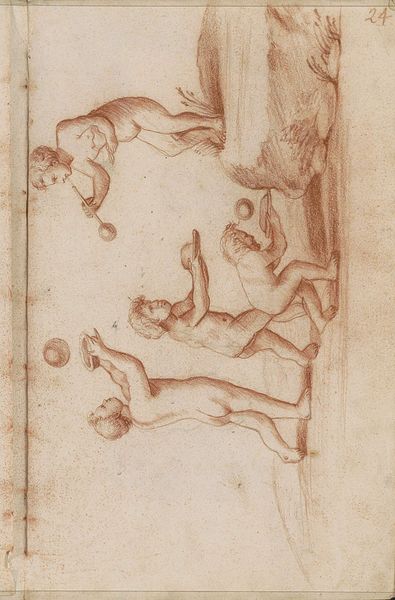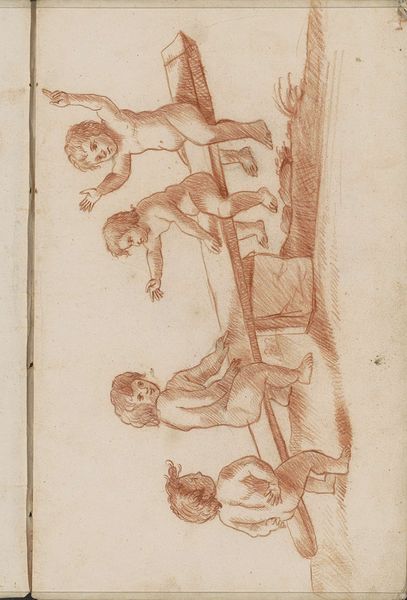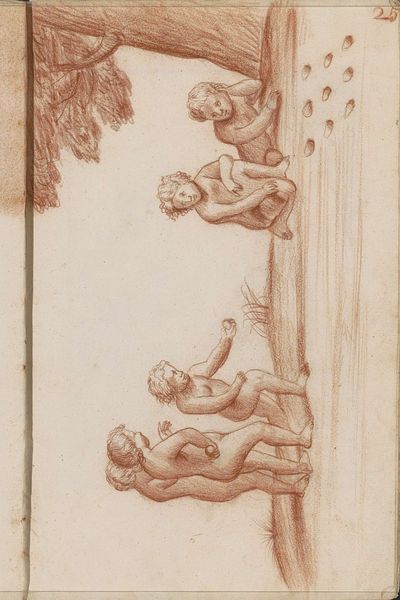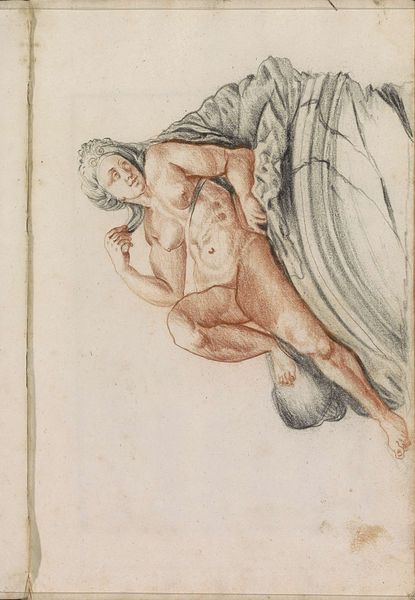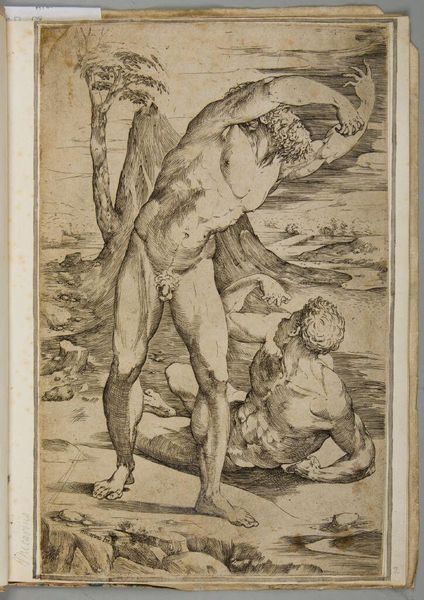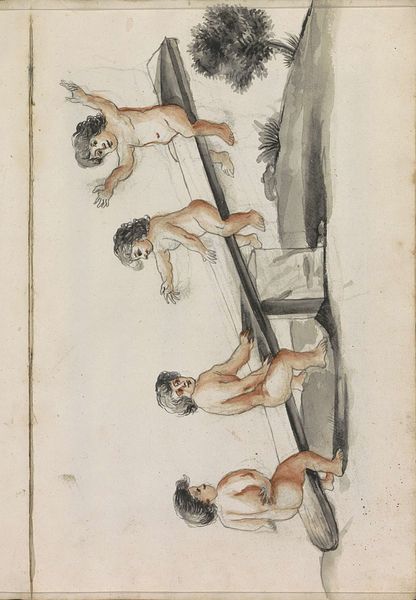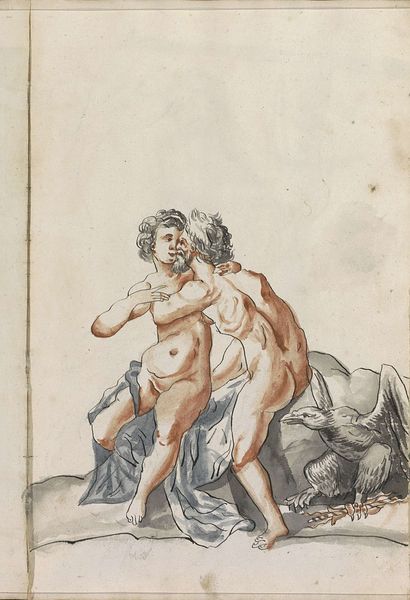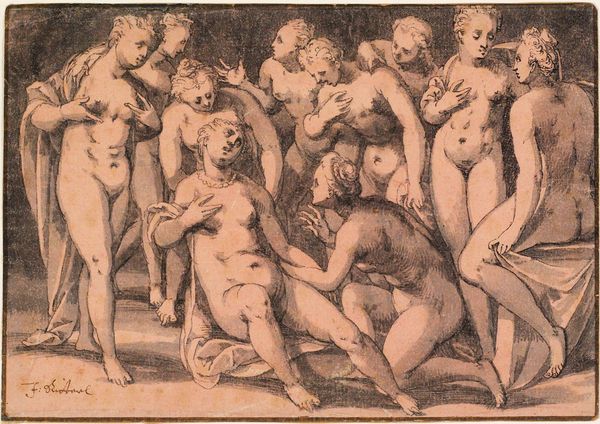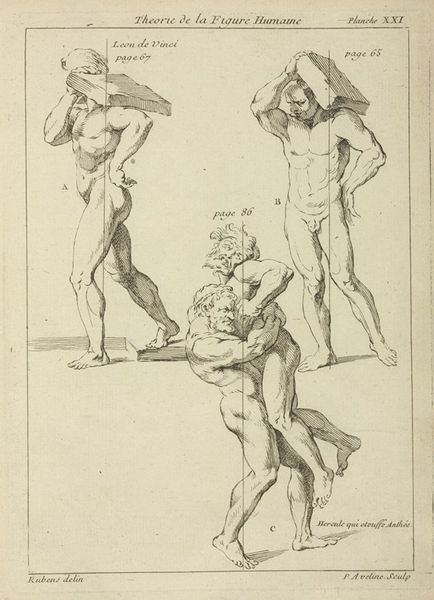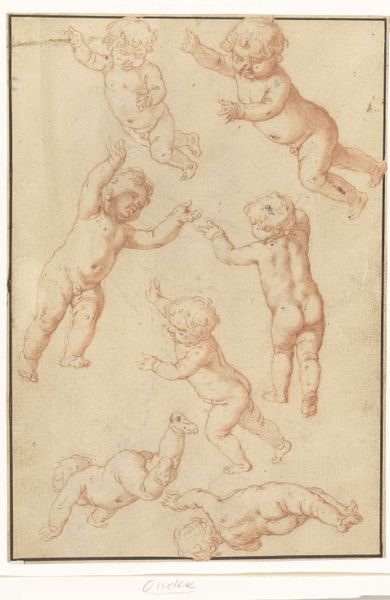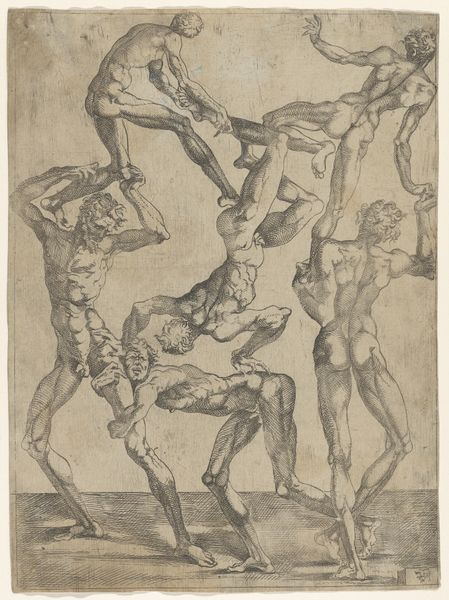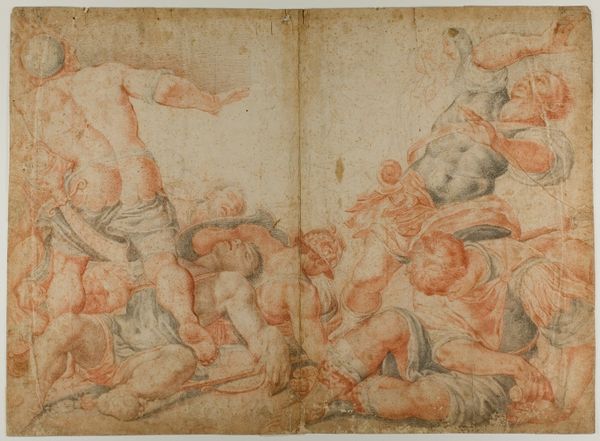
drawing, watercolor
#
drawing
#
baroque
#
figuration
#
watercolor
#
coloured pencil
#
nude
#
watercolor
Copyright: Rijks Museum: Open Domain
Curator: Looking at this drawing, I'm immediately struck by the somewhat melancholic quality of it despite the playful subject matter. The colors are muted, and the figures, though active, have a sense of being caught in a dream. Editor: I find the arrangement particularly engaging. Here we have Hendrick van Beaumont’s “Putti spelend met een Januskop” dating to 1696, a watercolor drawing showcasing a cluster of cherubic figures interacting with a Janus head. It’s intriguing to note the intersection of classical mythology and Baroque sensibilities here. Curator: Absolutely. Janus, the two-faced Roman god, represents beginnings, transitions, and duality. These putti playing with his head might be interpreted as grappling with the complexities of time and choice, or perhaps childhood innocence confronting the weight of adulthood. What a complicated emotional symbology. Editor: Precisely. During the Baroque period, such allegorical representations were prevalent, often employed to convey moral or philosophical concepts. This drawing likely served a didactic purpose, perhaps within an aristocratic household, subtly instilling classical knowledge. Curator: I also wonder about the physicality of it. They seem almost suspended in this ethereal space. Is that intended, I wonder, to communicate some tension or lightness in this scene? The Janus head appears heavy; they're really working to keep it elevated! Editor: It's fascinating how the art market conditions of the time also play a role here. Watercolors were appreciated for their immediacy and suitability for private collections, reflecting the tastes and aspirations of a growing elite class in the Netherlands eager to embrace classical motifs but not yet ready to do it through monumental commissions. Curator: It adds another layer of interpretation. So these playful putti aren't just figures from mythology; they also represent societal values and class dynamics of their time. I'll never see art the same way again after viewing this. Editor: Indeed. Art acts as both a mirror and a window, showing not only what the artist intended but what society valued, revealing much about both the past and our present moment as interpreters of that past.
Comments
No comments
Be the first to comment and join the conversation on the ultimate creative platform.
